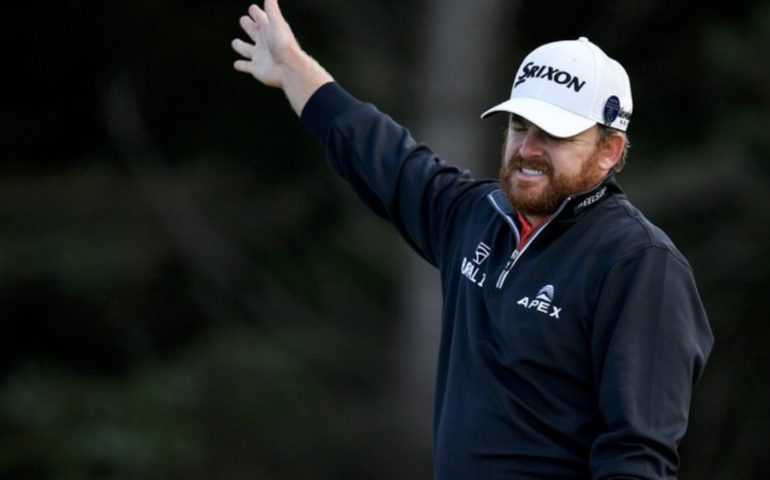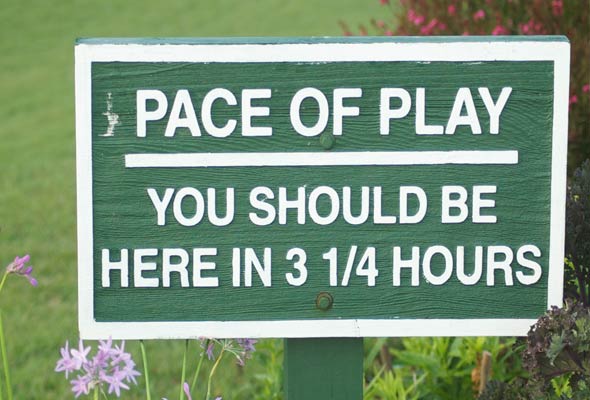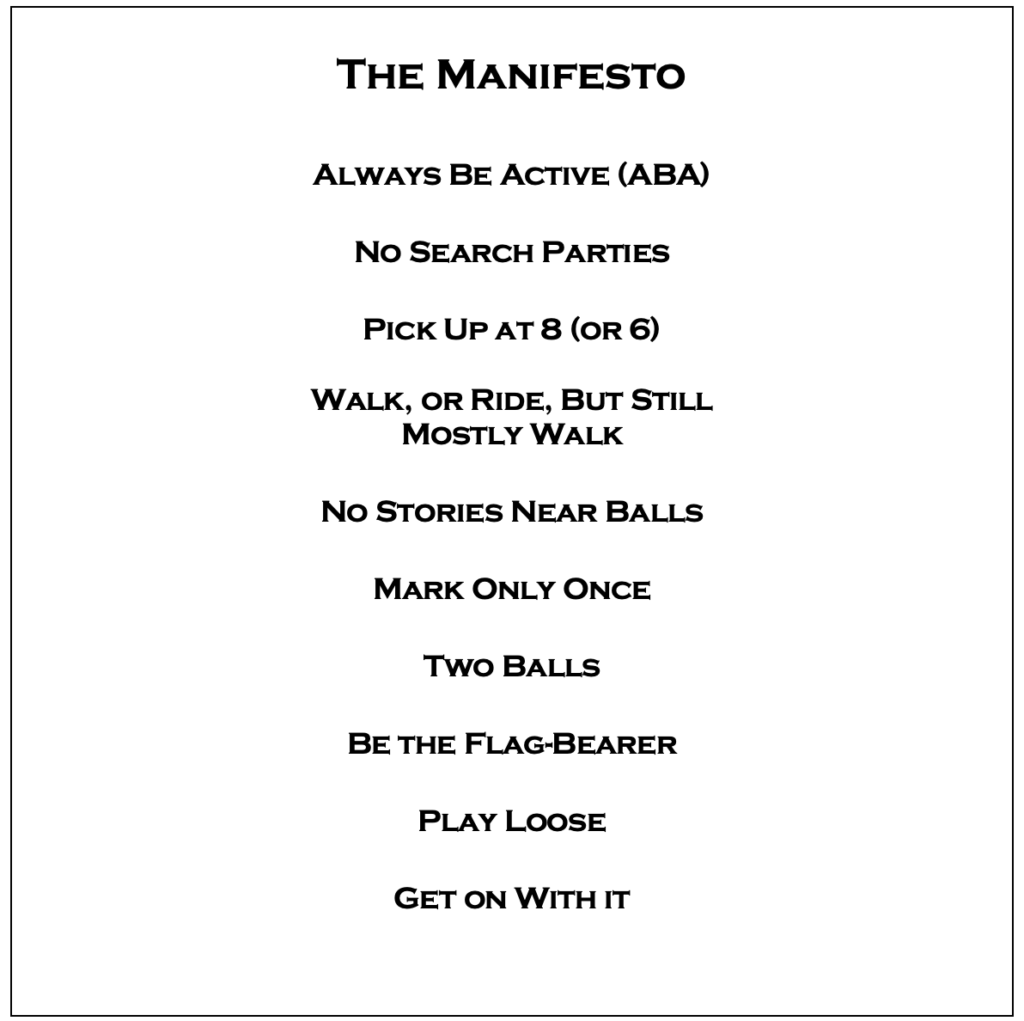Fast Play Manifesto
First off, this is not about J.B. Holmes, that poor, maligned social media avatar for tortuously slow play.

This is about you, your friends and foes, your family and your foursome. It’s about pace of play.
A pox of slow play consumes the game of golf — relentlessly and severely — and we’re no longer at a point where inaction against it can stand.
Americans have rarely played with the temper and speed regularly employed by the Scots and Brits, but for the last several decades we’ve managed to perfect deliberaton, finding ever more inventive ways to foul and elongate what should be a quick, spirited game. The temporal arc of our golf is long — and bending longer.

This has gone from an annoyance to a problem. Five-plus hour rounds are not tenable. It cuts into the number of times a year many people play, and for business professionals, people with young families and a generation of consumers used to accessing what they want more or less immediately, playing golf now makes little sense.
The reasons rounds have become long and arduous are wide and various but include, among other things: a proliferation of modern golf courses with narrow fairways and multitudes of penalty areas; developments that stretch golf holes in miles of loosely connected directions; a dependence on golf carts and cart paths; Sharpies; the pernicious influence of PGA TOUR-level deliberation and “pre-shot” routines; a lack of basic etiquette; and a basic misunderstanding of efficient play.
If all of this is too much to overcome, the last issue can still be addressed: it is within every player’s capabilities to play faster.

People come to golf at all ages and from all walks of life. My first sustained exposure to the game as an adolescent was through the American Junior Golf Association. That introduction included lessons and tests on the rules of golf and, just as importantly, etiquette. At a young age I learned the value of respecting the golf course and the experience of others.
Too few players today have learned the game through channels that formally promote an understanding of the concepts of etiquette that foster faster play. Slow play is usually not caused by those who are uncaring or self-absorbed, although sometimes this is so, but by those who don’t know better. They may not even realize they play slowly.
I’ve half-jokingly suggested on my podcast that all golfers, before they’re allowed to play another round, should be required to pass a refresher course on etiquette, general rules and the basic ideology of quick play. Perhaps players could be directed to a brief “instruction zone” area near the first tee where these topics are explained, followed by certification and a signed agreement assuring they will attempt to complete their 18 holes in three-and-a-half hours.

Or they could be presented with this Fast Play Manifesto, which distills the basic concepts of brisk, forward-moving golf into a handful of tenets.
Many of The Manifesto’s tenets are assertive reiterations of the USGA’s more staid suggestions for pace of play with other motivations added for uniquely modern time snags. While these guidelines may be common sense for many of us, there are many more who can learn and profit from an enumeration of fast play principles.
The hope is that by codifying good golf habits, the issue of reversing slow play will become a rallying cry and taken on as a collective cause for a new generation of players. It is in everyone’s best interest.
Finally, the Manifesto is not necessarily intended to make you play fast golf, (although that would be welcome), but to help you play faster through intent, anticipation and awareness.
The Fast Play Manifesto
Always Be Acting (ABA)
Also known as “ready golf” in more anodyne form, this is the Manifesto prima facie: if you aren’t doing something while others are hitting, you’re playing slow.
Waiting on your companions is not the time to mentally compose that work email, work through the set of dense song lyrics stuck in your head or admire the newly bronzed leaves. If it’s not your turn you should be ready with tee and ball in hand, getting your yardage, reading the wind or the architecture of the hole, using up your practice swings, lining up the putt, starting to move–but be doing something. When it’s your time to go, the preparation is done.
No Search Parties
You and you alone are responsible for searching for your missing ball. Unless a partner’s ball is in the direct vicinity, each player shall carry on with their own circumstances.
The rules of golf allow three minutes to search. Take two, then take a drop. Sorry, it’s just not that important.

Keep Score, But Not Too Much
I’m all for stroke play and playing for score. But there comes a time when enough is enough. USGA handicap rules enforce an upper limit on the score you can take on a particular hole. Let’s just say if you’re north of 8, pick it up (6 on a par-3). Work out a consistent arrangement with your playing partners. Keep it moving.
Walk
The slowest form of golf, contrary to what industry types often assert, is a foursome riding in carts. The inefficiency of tethering two players and their bags to one vehicle — or of playing 90-degrees, or worse, cart path only — is a model for wasted motion and lethargy.
Walking enables players to take direct, simultaneous routes to their targets while moving at self-determined pace. Four knowledgeable players carrying or using trolleys (yes, trolleys, trolleys and more trolleys) can outpace groups in carts if they’re working in concert and persistently advancing their ball.
Added bonus — walking straight onto the front of a green is one of the game’s innate pleasures (especially when compared to summiting a containment mound after approaching it from the cart path behind). Take advantage of this small joy.

Fine, Ride. But Still Walk
Just because you’re taking a cart doesn’t mean you can’t walk. Get out of the cart when your partner is playing and walk with a few clubs to your ball. Grab your putter and wedge and walk up to the green. Get some exercise and stroll from the green to the next tee. Keep active and keep moving. ABA (see above). You’ll find you’ll be ahead of your group most of the time.
30 Yards of Silence
There’s a time for business and jokes and story telling, and that time is when you are far away from you ball, preferably moving toward it but not yet close. Then, when any member of the group is within 30 yards of their ball, let silence commence.
Holding court on cleared tee boxes and fairways is a red-letter breach of etiquette. Confine the deep thoughts and stand up routines to those precious in-between moments of transit. Of better yet, the 19th hole.
One Mark Per Green
Or in other words, continuous putting.
For a short time in the late 1960s the USGA had a continuous putting rule: once you began your turn you weren’t to stop until you holed out. The Masters even adopted it for a few years.
The rule should be: you may mark your ball to clean it, once, and that’s it. Unless it is directly interfering with another players putt, either finish out or leave it be until your next turn.

The Sharpie pen has become one of the most vile culprits of unduly long rounds. Pace of play around the world worsened once average players — like professionals on television — began drawing lines on their balls to aim putts. This set off an epidemic of marking and realigning second and even third putts on Every. Single. Green.
Question: are we as a golfing populace better putters because of it? I think you know the answer.
Clean your ball, don’t touch it, putt out.
Flag Man (or Woman)
If you’re the first to putt out, you are the flag person. Have it in hand, ready to put back in the cup the moment the final ball on the green is holed.

Two Balls in Pocket
Unless you’re about a 5-handicap or better, or you’re playing the Old Course with 100-yard wide fairways, keep two balls in your pocket on every tee. There’s no reason to waste time running to the cart for a second ball after you’ve sprayed one into the brush.
It’s the little things that add up.
Play Loose
Etiquette in golf is important and helpful. Sometimes, however, the game’s arcane routines can impede efficient play. Be perceptive and when they do, skip them.
For instance, if you’re first on the tee and no one else is ready, go ahead and hit. And it’s fine to edge your way up the hole ahead of the person playing their shot as long as safety is considered. Stay to the side, remain aware, carry on.
In fact, shake up your whole routine. Skip the practice swings and step right into your shot. Don’t want to walk in reverse all the way to the back tees? Don’t. Tee it where you are. You’ve arrived at your ball without the “correct” club? Try to manufacture a shot with what you have.
To play relaxed is to play fast. Golf is fun. Go with what you have. Don’t sweat it.
Finally, Just Get On With It
Unless you’re playing for the highest stakes — actually, even if you are — there’s no reason for unreasonable delay. When it’s all said and done do as the Scots do, and just get on with it.



7 Replies to “Fast Play Manifesto”
Courses provide 4 carts for
Courses give each riding player their own cart! Someone invent “simgle” carts 3 wheel desjgn.
Get rid of beverage/food carts!
https://www.golfboard.com/
Sorry but in the desert food carts are a pleasure!
Cut the rough! This isn’t the U.S. Open! Provide yardage sheets for all par 3’s from each tee!
Hit it twice then throw it onto the tee and put out, no practice swings, always be drinking and take your beer with you, and mainly don’t be slow, hustle up to the ball and hit it. This is Derek’s brother in law, and I can shoot 121, drink a twelve pack and be done with 18 in 2:45.
It’s all true.